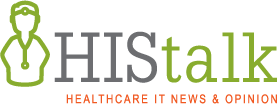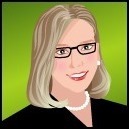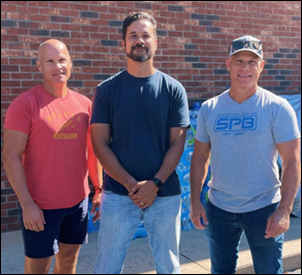A. J. Loiacono is CEO of Capital Rx.

Tell me about yourself and the company.
I have been in the pharmaceutical supply chain for 24 years. I’ve always had a special interest or focus in software development, which makes me kind of unique in my role.
Capital Rx has two main businesses. We are a full-service PBM, a pharmacy benefit manager, servicing self-insured payers such as employers, unions, and municipalities. The other side of our business is that we are a PBA, a pharmacy benefit administrator, and we license our software and technology services to health plans.
What role does technology play in those two business lines and how advanced is it?
This has been an oversight for much of healthcare for far too long. The massive underinvestment in technology is catching up with the country.
People think that there has been investment in healthcare. What I explain is that there are two major electronic workflows when it comes to healthcare in the United States. I’m generalizing, but one is the EMR-EHR, the electronic health record systems. This is the workflow to activate a claim, such as scheduling and decision support software. But the moment a medication is prescribed or a procedure is performed for a patient, congratulations, in the US healthcare system, you have created a claim.
That claim then disappears from the very workflow that we have been describing. It moves over to my world, which is what we call claim administration, the workflow to administrate a claim. Who is eligible for the benefit? Who’s in network? What’s the plan design? What’s the co-pay? Who is being billed? Who is being reimbursed?
On this side of the fence, we have invested nothing in over the last 20 years. This bill of technical debt or ignorance has caught up with the entire industry, because administrative workflows enable us to use new ideas to leverage new clinical ideas. If you have a brilliant healthcare idea, good luck implementing it, because the infrastructure or the technology won’t support it. This massive underinvestment is one of the key areas that’s holding back the country.
How can technology address the key issues of drug transparency and cost?
Let’s start first with price transparency. You are really talking about an innovative payment workflow or an innovative pricing workflow when you talk transparency. Because up to this point, one of the things that’s very odd about the prescription healthcare process in the United States is that no one knows what the real price of anything is. A lot of times, that’s because price may be obfuscated by co-pay. If you pay a flat $10 or $20, you don’t know or necessarily care what the price of the drug is. But with high-deductible plans or co-insurance over the last 20 years, patients have become more and more exposed to price. Patients start to feel the cost. It’s no longer hidden behind flat co-pays.
When we talk about technology, what you’re trying to do is allow buyers and sellers to freely communicate on price. What do we mean by that? The buyers are the patients, but really the buyers are what I would call the ultimate payers. These are the people that are plan sponsors or people that are providing benefit services on behalf of patients. The sellers are the pharmacies, but it’s a little bit more complex in the US healthcare system because the pharmacies don’t really have a direct negotiation with the patient. It’s coming through some form of insurance, again through a PBM or a carrier.
By allowing the buy side, if you will — the patient — to freely communicate with the seller who’s really selling the drug — the inventory is held by the pharmacy — you create market efficiency. That sounds simple, but it’s difficult to manage inventories of 140,000-plus unique drug codes and to evaluate price based upon different benchmarking, wholesaling, and resale kind of pressure points. What hasn’t existed in the United States is an efficient market around drugs. It has been hidden. It’s been far too opaque.
This leads to the second problem, which is that the person that’s administrating the pharmacy benefit became conflicted along the way. This is the problem with the traditional PBM model. If you went in a time machine with me back to the 1990s, PBMs didn’t make money on drug spend. Their job was to be an unbiased administrator of drug spend. Very easy.
Then in the 21st century, they shifted their model and said, there’s no longer a flat fee. My services are effectively free. We know that nothing is free, so how are they getting paid? The statement was, “We’re making a little bit of money on the drug spend.” People thought that seemed reasonable. But the inherent conflict of interest under that model is that the moment you start making money on drug spend, the more expensive the drug, the more money you make. The more fraud, the more waste, the more abuse, unfortunately, the more money you can make.
Because of this inherent conflict, the industry started to adopt more opacity, more confusion, and more limitations around data, because the people that are making money on drug spend don’t want people to understand true price. Capital Rx took a different approach. We said, we’re not going to make money on drug spend. We’re not going to have any fulfillment assets, which means that we’re not going to own pharmacies, mail, retail, specialty. We’re not going to own or buy into a GPO. Our job is to let buyers and sellers communicate a price.
Here’s where the technology comes in. The technology needs to create efficiency to transmit price, not just on behalf of the plan sponsor, but to the patient. To also help the patient that may have unfortunately been put in a situation where they’re using a medication that’s far too expensive and there’s a generic or a lower-cost alternative available, but there was never any interest under a traditional PBM model because of the inherent conflict of interest.
If you have delegated the administrative power to a PBM as a self-insured employer or plan, and if your PBM can make money on an error that is not in the best interest of your plan or patient, you need to change that model.
Companies such as CVS and Optum that operate PBMs have vertically integrated to own insurers, specialty pharmacies, and traditional pharmacies. How do they spread the total cost of a drug over those businesses to optimize corporate profit?
At the turn of the century, PBMs decided to move to a model where they made money on drugs. It’s the perfect model. Why would you change anything? It’s an inelastic demand curve. Patient utilization does not budge in the United States. Prices only appear to inflate, with list price increasing every year and the average cost per prescription goes up due to the proliferation of more expensive specialty drugs.
When you have the perfect market, you don’t innovate, you consolidate. You not only buy more of the PBM model, you buy more of the supply chain. This is exactly what we saw. It’s not just the PBM buying retail assets, but buying mail assets, specialty assets, rebate GPO assets, and now even further with medical assets in the form of the actual insurance carrier, but even down to the physician level, buying entire surgical or physician practices. This is such a problem in the United States. It’s something that we need to focus on more than anything else, which is that vertical integration is a real problem.
The ultimate payer is usually the employer that provides health insurance. How can they empower themselves to force change on these huge healthcare corporations?
It’s very easy. The solution is in front of everyone. Very simply, If you want someone to administrate your benefit plan, that’s all they can do.
Let’s say I’m a big vertically integrated PBM and I want to be your administrator. I want to administrate your benefit plan. You as the employer say, that’s great, you can administrate my pharmacy benefit plan. But we can’t use any of your fulfillment, GPO, or other vertically integrated assets, because I need to separate church and state, if you will. I need to make sure that my administrator remains unbiased and unconflicted.
The reason for this is that the moment you make money on drug spend, unfortunately, there’s an inherent bias in every decision. Be it there or not, you’re making more money on the actual drug itself. As the administrator, you need to push them and say, you can only administrate my plan. I could go to another PBM and say, hey, I’d like to use your mail facility, and I’d like to use maybe even a different entity’s rebates.
What we need to do is to peel away the things that are creating the potential for financial incentives to drive the wrong decision on behalf of a payer. I keep going back to this point, which is that if your PBM makes a mistake — I used a different pharmacy, I chose a different drug, I chose the different classification system, I applied the wrong DAW code — if your PBM can make more money, that’s a problem. By separating mail, specialty, and retail outside of the administrator’s financial purview or gain, I’ve created an aligned arrangement. My new administrator that’s just administrating services is beyond reproach. There will always be mistakes in any healthcare setting, but you can’t point a finger and say that they’re making more money on that mistake. Once you separate these two things, magic happens for both the patients and the plan.
Are employers and health plans aware that they have alternatives? How do you promote the idea that PBMs come with a conflict of interest unless you take specific actions?
I’ve been saying this for seven years. I remember very clearly that I was in a meeting with a TPA and they were considering using our PBM. They said besides moral outrage, AJ, does your company really have anything to offer? I said, moral outrage? This is a real fiduciary problem if you’re not careful. The people that you are having administrate drug spend, plan design, clinical decisions, and network decisions on behalf of membership are making financial gain from potentially bad decisions. They were like, this doesn’t matter.
We stayed true to our philosophy. We are a B corporation. We don’t make money on drug spend. We invested heavily in technology to create the infrastructure for the future. Lo and behold, it turns out that we were correct. Legislative pressure, both state and federal, suddenly started to appear about three or four years ago. You started to see regulatory scrutiny and oversight from the FTC, CMS, other areas. You suddenly see moral outrage from patients sharing stories of pain what I would say is real price inequality. You then also see the media covering these stories. Then it begins to culminate into lawsuits and litigation, where you see both J&J and Wells Fargo, unfortunately, being named in fiduciary cases, where it’s being suggested that they are not doing the right job by using what appears to be a pricing system that is highly variable and unfortunately selecting prices where there are lower prices available in the market. You start to see these tailwinds accelerate.
For our organization, we started with zero lives and a mission. Now going into our seventh year of operation, we service over 3 million employer membership around the country. These are Fortune 500 companies. These are some of the largest municipalities, unions, health systems, and universities. We’re very proud. We are thoughtful in the services that we’re providing.
This is a tipping point moment where, for the first time, you’re seeing bigger and bigger employers say, enough is enough. I need an aligned administrator, PBM, and the market has more than enough willing participants to provide retail, mail, specialty, and rebates. This is exactly what we do. We do not own any of these assets. Our job is to provide access to the pricing and value that the market is willing to offer. It’s a simple model, but the reason it became so complex over the last 20-plus years is because there was too much self-interest driving the model.
How hard would it be for government or anyone else to look at the medication value chain to try to understand what parts affect spending and where profits or inefficiencies exist?
This is one of the things that makes this a clear example of pain and consumer discomfort. It’s easy for anyone — legislative side, regulatory side — to say, could someone give me an example of drug spend not being a great experience in the United States? There’s millions of examples.
The question then is, how do you synthesize what is wrong in the supply chain from manufacturer through wholesaler to retail pharmacy or mail order to the PBM or carrier to ultimately the ultimate payer, the plan sponsor, and then ultimately to the ultimate user, the patient? How do you make sense of such an overly complex system? This is what has made this such a difficult discussion.
The other thing is, think of all the people that are making money on the current model. A lot of people don’t want to see the good times change. It’s lonely trying to move such a huge industry in the right direction. Thankfully, there are other people that share a similar vision and are helping us push this industry in the right direction, and many of them are competitors. Some of them are allies in this position.
But the whole point is that there is a growing movement for change because the pain or the issues is clear. The solutions up to this point were not. Some of it, again, was hidden or dampened by people of self-interest that don’t want the model to move. But now you’re seeing people come to the table and saying, enough’s enough. There’s no reason we need to continue down this path.
The simplest way to solve for this problem is to just separate church and state. In the old days, you could be a commercial bank, but you couldn’t also be an investment bank simultaneously with the same member of your banking system. By separating these things, you have clear separation of powers and you have removed all conflict. You can still use all the big-name players for retail, mail, specialty, fulfillment, and GPO, but they can’t be your administrator. Because the moment you make money on drug spend, all the wrong decisions can happen, and if there’s ever any error or oversight, a traditional PBM can make more money. That’s just liability for any fiduciary.
What issues will be important to the company in the next few years?
I’m a big believer in continuing to innovate. Companies that stay static are displaced over the long term. A big part of what we do at Capital Rx is not just work on the solutions that meet the demands of today’s healthcare system, but to be thoughtful, look to the future, and to continue to provide new services and new infrastructure to support not just our ideas, but what comes next. We are certainly not the architects of the future of healthcare. What I often say is that Capital Rx has the best infrastructure. We are the best plumbers in healthcare. We provide the infrastructure for what is going to come next. That’s where we continue to invest heavily. Not just to stay relevant, but to position a clear path for healthcare to evolve in a positive trend.
We are seeing the tailwind of legislative pressure, regulatory pressure, and the media. Bad things happen when you have someone on the buy side and the sell side. If you’re on the buy and the sell side, you represent yourself always. That’s the problem with the traditional PBM model. Through vertical integration, they represent themselves at every step of the supply chain. That is a recipe for disaster, and disaster in this case is defined by hyperinflating drugs and medication that is perceived to be too expensive for the average American to afford. It just needs to change.





















































In a nutshell, Epic says that this tortious interference stuff is getting tortuous, so let's just take a torch to…